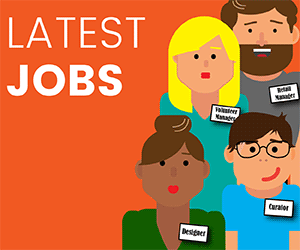Collections of historical materials can usually benefit from increased cataloguing and metadata to make them searchable by the public, and developments in technology make this possible. This is especially true of cartographic materials; “georeferencing”, which is assigning real-world geographic coordinates to the locations on maps, is essential to allow the discovery of historic maps using popular web technologies. Capturing this spatial metadata is a time-consuming and expensive process, so crowdsourcing the task was an eminently attractive way to achieve it. By inviting online users to undertake georeferencing, the maps also become a means to publicise the collections and encourage intensive interaction, allowing historic maps to be combined with modern mapping and enhancing the ability to compare and analyse the representation.
The Library partnered with Klokan Technologies to implement and customise its Georeferencer service. The service is a set of web-based geospatial tools for georeferencing and visualization of maps, which were then customised and integrated into the Library’s existing Online Gallery. On entering the site, a map is selected or randomly assigned, and the user is presented with two windows: one to view the digitised map, the other displays current online mapping which the participant uses to find the location and pinpoint it. By choosing three or more points that correspond between the two maps, the user may then view the historic map overlaid in Google Earth. This visualisation provides a modern geographical context for historical landscapes of the 17th, 18th and 19th centuries.
Asking the public to assist with existing collection items from its vast store was a new move for the British Library. The visual nature of maps and their suitability for comparison is no doubt at the heart of the project’s appeal to the public, however, the project would not have been possible without the technologies for crowdsourcing. These crowdsourcing features included integration with social networks and graphs visualizing progress, which recognised individual contributors by name.
The initial pilot of BL Georeferncer was opened to the public in February 2012, following development and customisation of Georeferencer 3.0 (Kowal and Pridal, 2012). Two of the Library’s most in-demand collections of digitised historic maps, comprising a total of 725 items, were included: the Ordnance Survey (OS) Drawings of England and Wales (1789-c.1840), the original large-scale drawings made for the OS’s first published series of maps, and the Crace Collection of maps of London (1560-1860), consisting of manuscript and printed maps illustrating the urban development of the city from 1560 to 1860. When BL Georeferencer was launched, the word spread via Twitter and Facebook, resulting in all of the maps being georeferenced in less than one week.
The most prolific georeferencers were invited to the British Library to visit the Cartographic and Topographic Materials section. Meeting the participants was revelatory and their feedback resulted in developments in the next round. All were further invited to participate in the AHRC Crowd-Sourcing study led by King’s College London. The resulting spatial metadata was quality-checked, and added to the JISC-funded Old Maps Online search portal within the month, demonstrating the practical use that the public’s work with BL Georeferencer had made possible.
A second batch of maps was released to the public for georeferencing in October 2012. The maps were all of areas of the UK and covered a longer period of time – from the 16th to the 20th century – giving a glimpse into the breadth of the British mapping. Some were already online whereas others had not been seen by the public before. Publicity took place via social media, and there was an increase in the number of participants by 30%. Based on feedback from the previous round the credit system was changed to credit the number of points tagged rather than the number of maps. The total of approximately 700 maps were consumed speedily by a hungry public, georeferenced in six days.
Our most recent phase of the project in January 2013 proved to be the most popular round so far, both in terms of time completed and number of people involved. For the first time the maps selected were from across the globe and all were available online for the first time. Press coverage resulted in a greater awareness of the project, which was completed in less than three days. In total all 781 maps were completed with an increase in the number of participants by 55%.
By asking the public to assist, the British Library was able to make its map collections digitally “alive”, while engaging with an online audience eager to work with maps online and contribute their time and energy. The visualisations of historic maps overlaid in Google Earth are now searchable and accessible publicly via the Online Gallery. All of the resulting data will be added to the search portal Old Maps Online that provides access to scanned maps collections from all over the world, and to the relevant catalog records in the Library’s databases. The enthusiasm and passion of members of the public for maps combined with user-friendly and effective crowdsourcing technology has made this project possible, benefiting people across the world who have improved online access as a result. In the future, the British Library plans to make all its digitised cartographic content available for georeferencing, develop the technology to make use of social media tools and offer enhanced roles to star participants – keeping crowdsourcing and the enthusiasm of participants at the heart of the project.
Back to top




